Gerhard Hoehme & Michael Müller. In Praise of Shadows - Das Navigieren zwischen Denken und Fühlen
10 July to 21 August 2021 ⟶ Galerie
Installation View, Gallery Georg Nothelfer, Photo: Frank Sperling
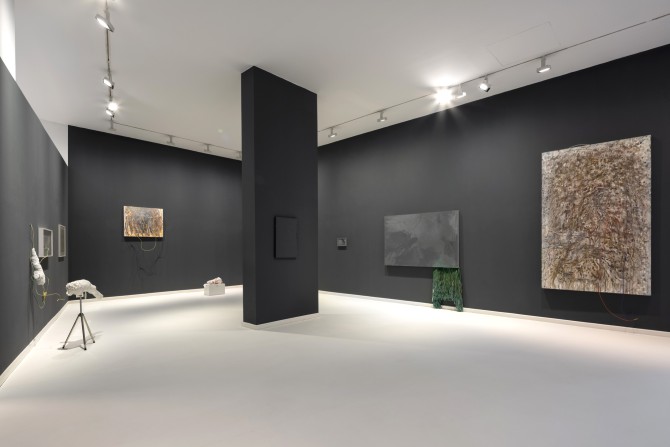
Installation View, Gallery Georg Nothelfer, Photo: Frank Sperling
Gerhard Hoehme, 1986, Feuergott, acrylic on canvas, PE strings, 80 x 100 cm
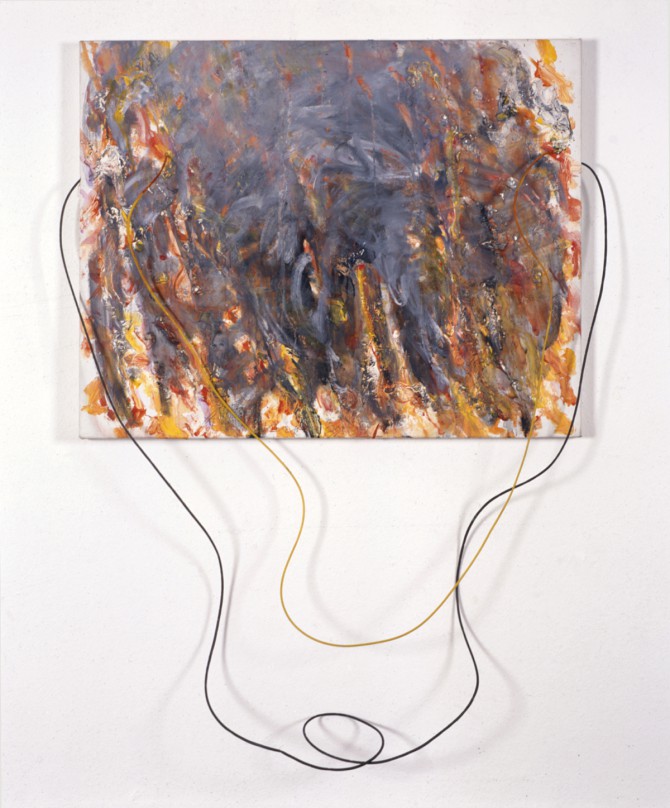
Gerhard Hoehme, 1986, Feuergott, acrylic on canvas, PE strings, 80 x 100 cm
Gerhard Hoehme, 1986, Durchpulst und umpaust durchblutet und umpaust, acrylic on canvas, PVC sensors, 240 x 140 cm. Photo: Katrin Rother
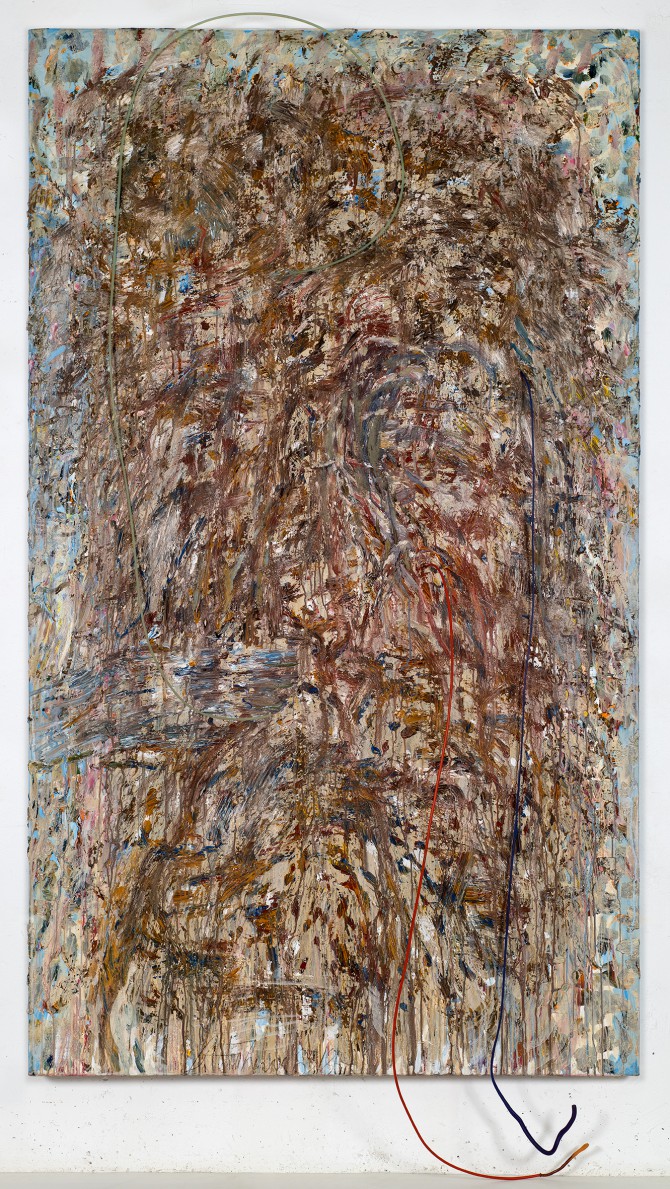
Gerhard Hoehme, 1986, Durchpulst und umpaust durchblutet und umpaust, acrylic on canvas, PVC sensors, 240 x 140 cm. Photo: Katrin Rother
Michael Müller, 2014, Metaphysik, wood, oil, acylic, acrylic plaster, isolated copper and tripod, dimensions variable
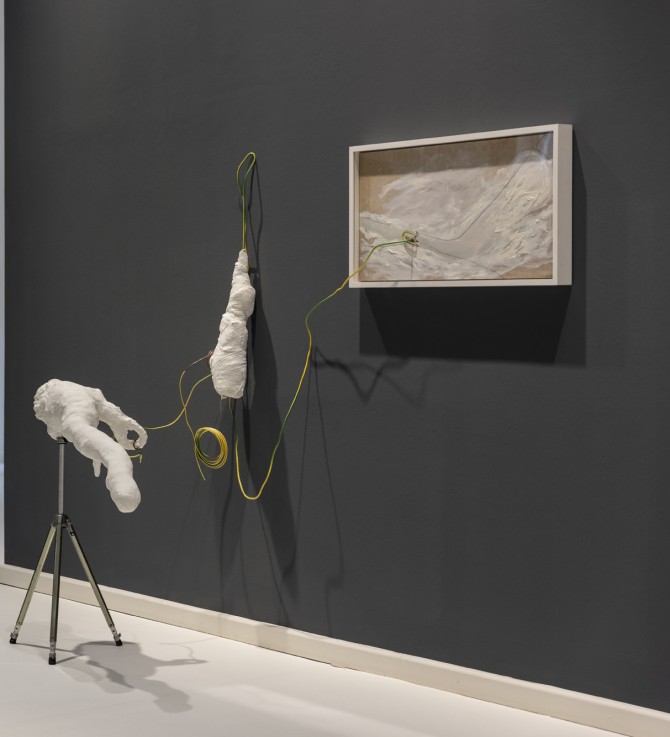
Michael Müller, 2014, Metaphysik, wood, oil, acylic, acrylic plaster, isolated copper and tripod, dimensions variable
Michael Müller, 2020, Framing as a setting (1, 2, 3, - ∞) +1 Accessoire (Auslagerung von Möglichkeiten), acrylic and laquer on Belgian linen, bast skirt, 200 x 180 cm
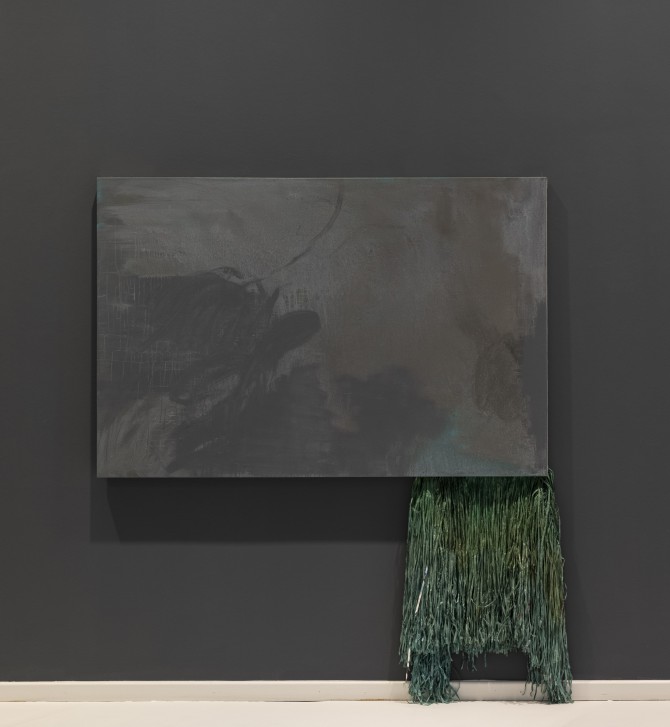
Michael Müller, 2020, Framing as a setting (1, 2, 3, - ∞) +1 Accessoire (Auslagerung von Möglichkeiten), acrylic and laquer on Belgian linen, bast skirt, 200 x 180 cm
Installation View, Gallery Georg Nothelfer, Photo: Frank Sperling
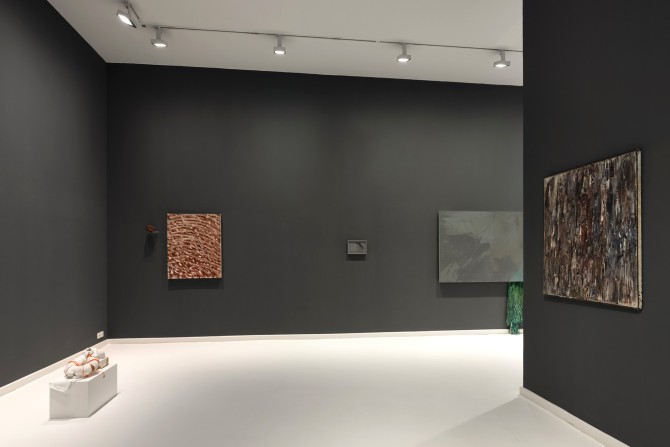
Installation View, Gallery Georg Nothelfer, Photo: Frank Sperling
Gerhard Hoehme, 1981, Ein Schritt hinweg zur Seite, und es ist still, acrylic and PE sensor on canvas, stone on plexiglass, 100 x 80 cm (WV 81-13)
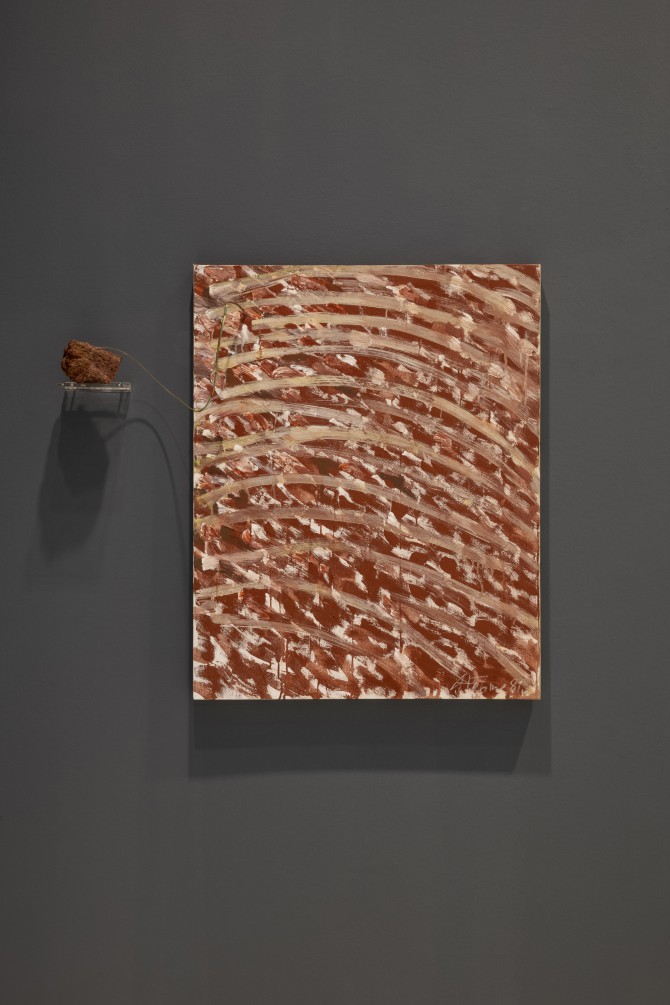
Gerhard Hoehme, 1981, Ein Schritt hinweg zur Seite, und es ist still, acrylic and PE sensor on canvas, stone on plexiglass, 100 x 80 cm (WV 81-13)
Michael Müller, 2014, man trousers, gauze bandage, sponge, acrylic, plaster, cotton nappies, safety belt, string, pedestral, 18 x 47 x 27 cm
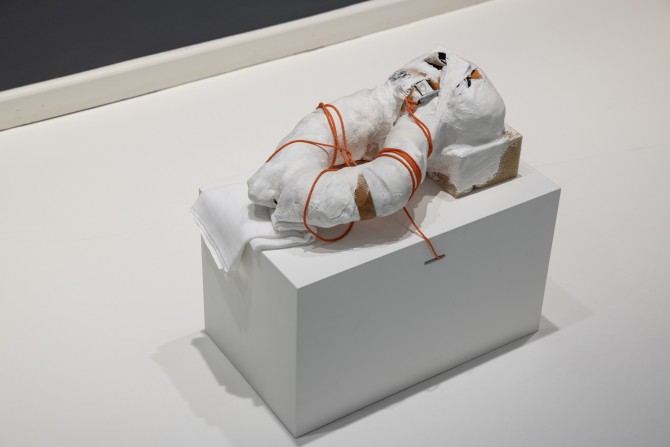
Michael Müller, 2014, man trousers, gauze bandage, sponge, acrylic, plaster, cotton nappies, safety belt, string, pedestral, 18 x 47 x 27 cm
Gerhard Hoehme, 1958, Ununterbrechbar das Nichtunterbrechbare, oil on canvas, 100 x 80 cm (SOLD)
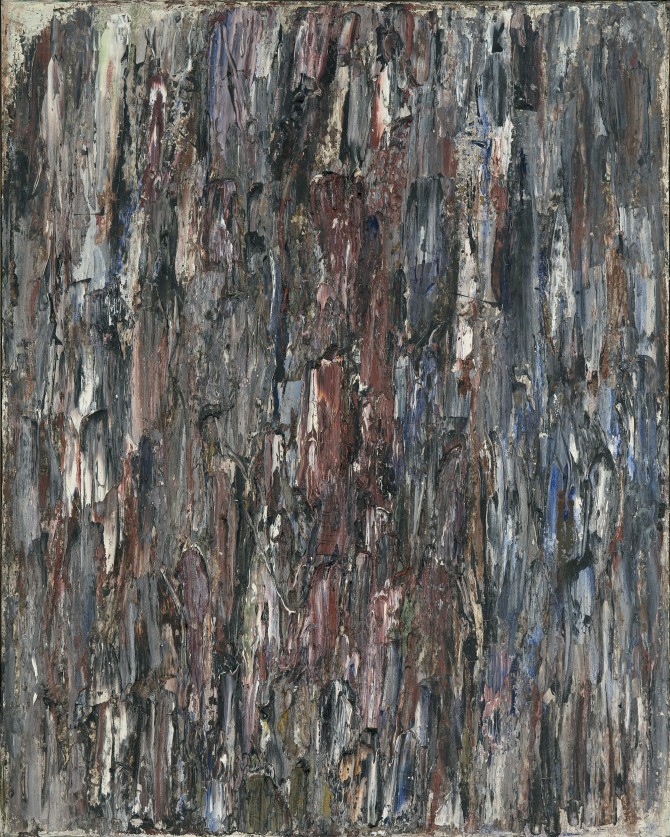
Gerhard Hoehme, 1958, Ununterbrechbar das Nichtunterbrechbare, oil on canvas, 100 x 80 cm (SOLD)
Installation view, Gallery Georg Nothelfer, Photo: Frank Sperling
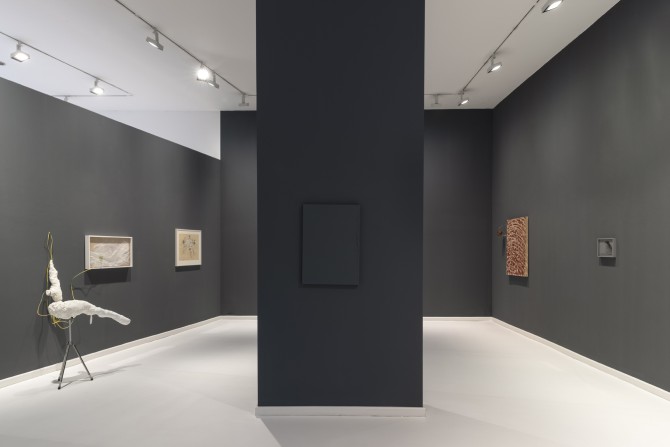
Installation view, Gallery Georg Nothelfer, Photo: Frank Sperling
Gerhard Hoehme, 1981, Untitled, pencil, watercolor, paper, 50 x 65,5 cm
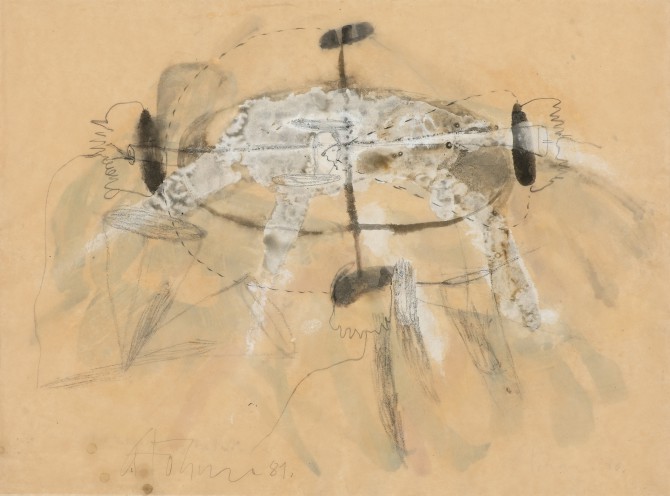
Gerhard Hoehme, 1981, Untitled, pencil, watercolor, paper, 50 x 65,5 cm
Installation view, Gallery Georg Nothelfer, Photo: Frank Sperling
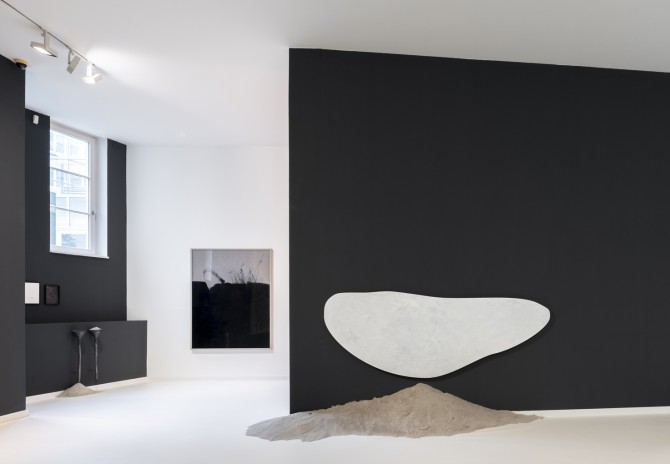
Installation view, Gallery Georg Nothelfer, Photo: Frank Sperling
Michael Müller, 2015, Eincremen, laquer on alumnium, clothes and sand, dimension variable
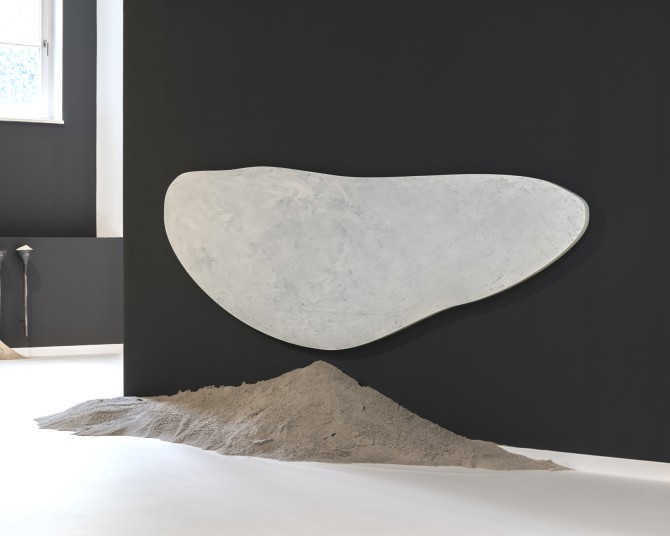
Michael Müller, 2015, Eincremen, laquer on alumnium, clothes and sand, dimension variable
Michael Müller, 2015, PENDING, lead, sand, graphite, spit and laquer, 33,5 x 25,5 cm (1x), 30 x 20,6 cm (1x), 80 x 17 x 19 cm (2x)
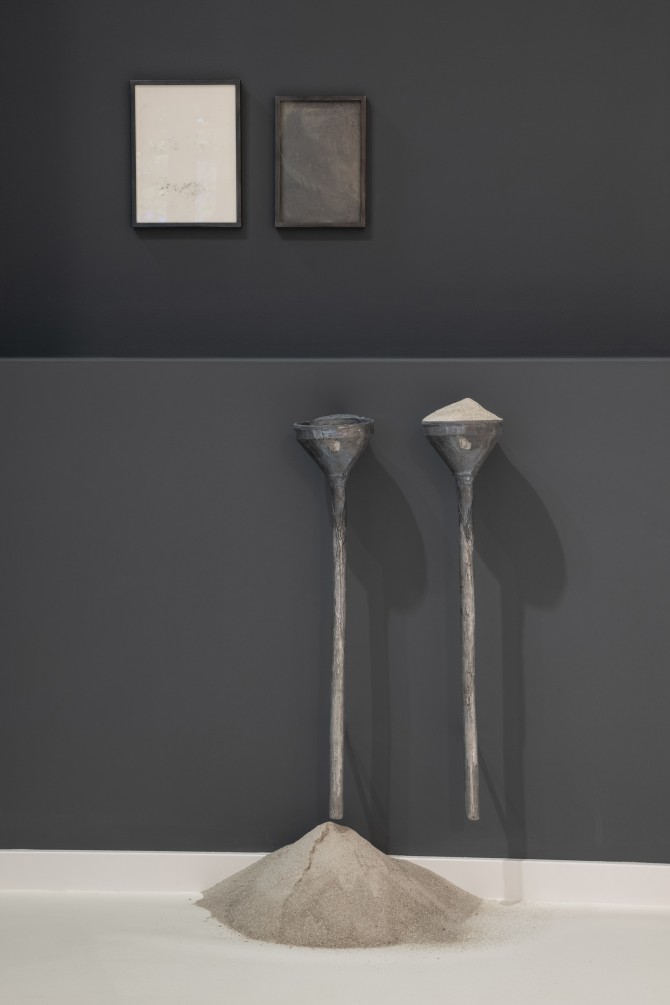
Michael Müller, 2015, PENDING, lead, sand, graphite, spit and laquer, 33,5 x 25,5 cm (1x), 30 x 20,6 cm (1x), 80 x 17 x 19 cm (2x)
Installation view, Gallery Georg Nothelfer, Photo: Frank Sperling
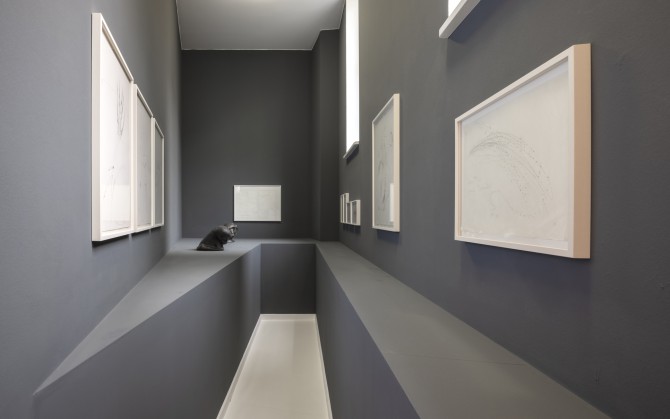
Installation view, Gallery Georg Nothelfer, Photo: Frank Sperling
Gerhard Hoehme, 1984, Untitled, pencil on paper, 70 x 50 cm. Photo: Katrin Rother
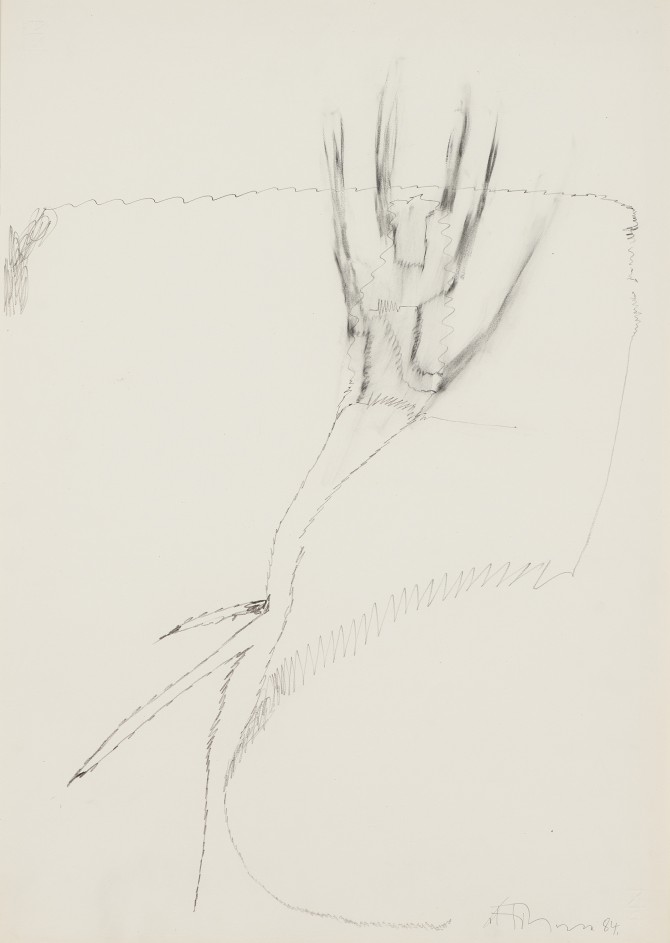
Gerhard Hoehme, 1984, Untitled, pencil on paper, 70 x 50 cm. Photo: Katrin Rother
Gerhard Hoehme, 1984, Untitled, pencil on paper, 70 x 50 cm. Photo: Katrin Rother
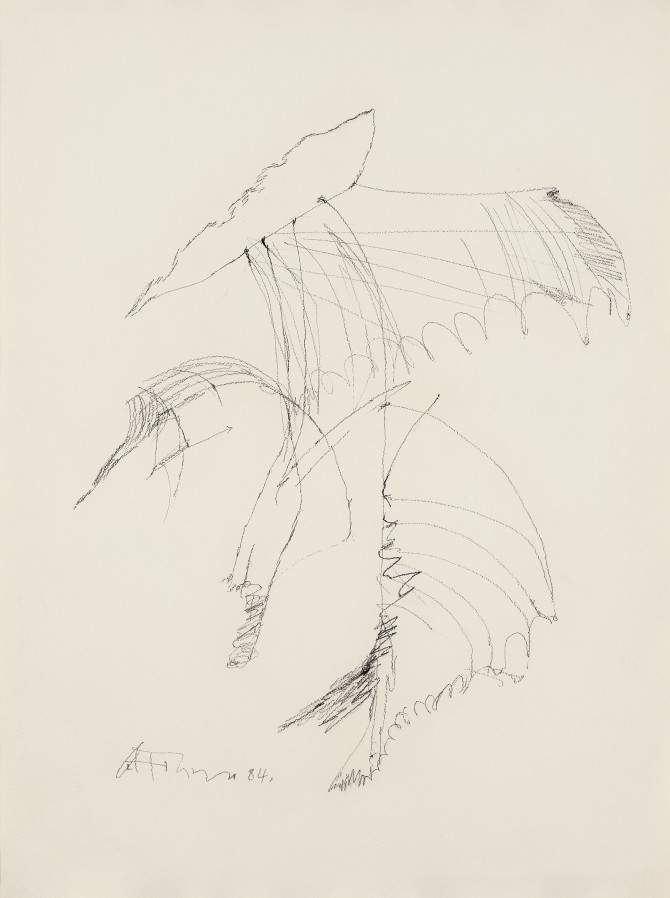
Gerhard Hoehme, 1984, Untitled, pencil on paper, 70 x 50 cm. Photo: Katrin Rother
Michael Müller, 2017, Köpfe, Series: Die Anderen, ceramic, approx. 30 x 30 x 30 cm (2x)
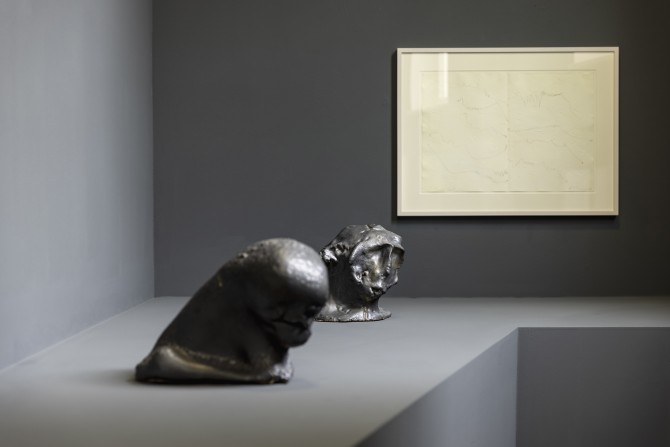
Michael Müller, 2017, Köpfe, Series: Die Anderen, ceramic, approx. 30 x 30 x 30 cm (2x)
Installation view, Gallery Georg Nothelfer, Photo: Frank Sperling
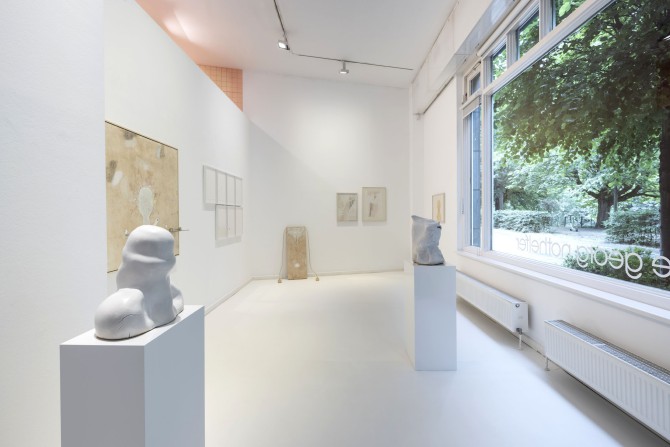
Installation view, Gallery Georg Nothelfer, Photo: Frank Sperling
Michael Müller, 2017, Geist, Series: Die Anderen, ceramic, 43 × 27 × 35 cm
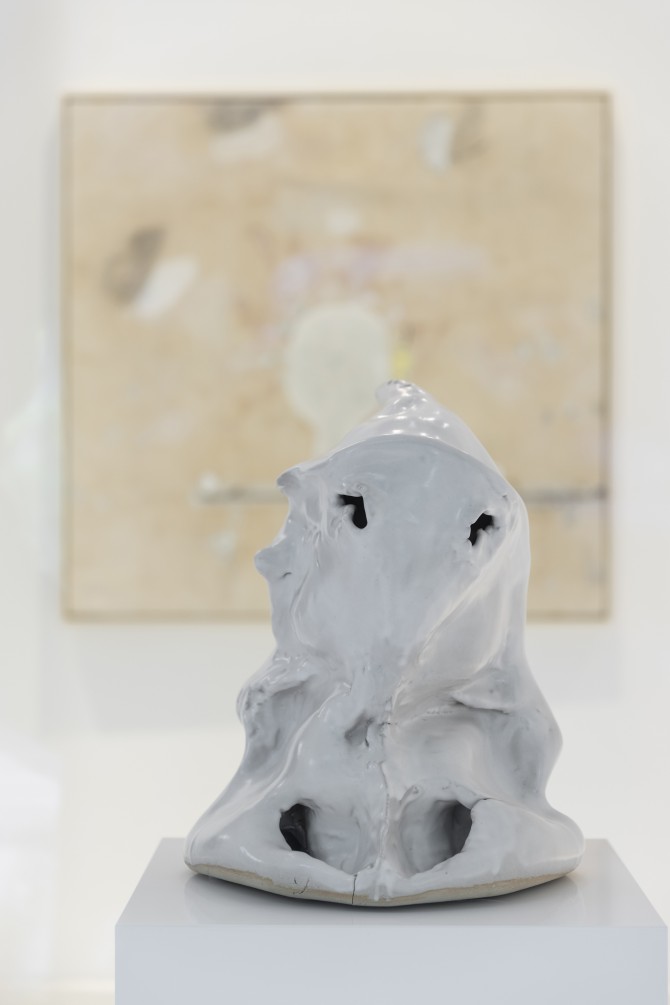
Michael Müller, 2017, Geist, Series: Die Anderen, ceramic, 43 × 27 × 35 cm
Gerhard Hoehme, 1973, Mediator zwischen Ding und Raum, acrylic, collage on damask, plasticine, acrylic glass, 115 x 112 x 12 cm (WV 73-05). Photo: Katrin Rother
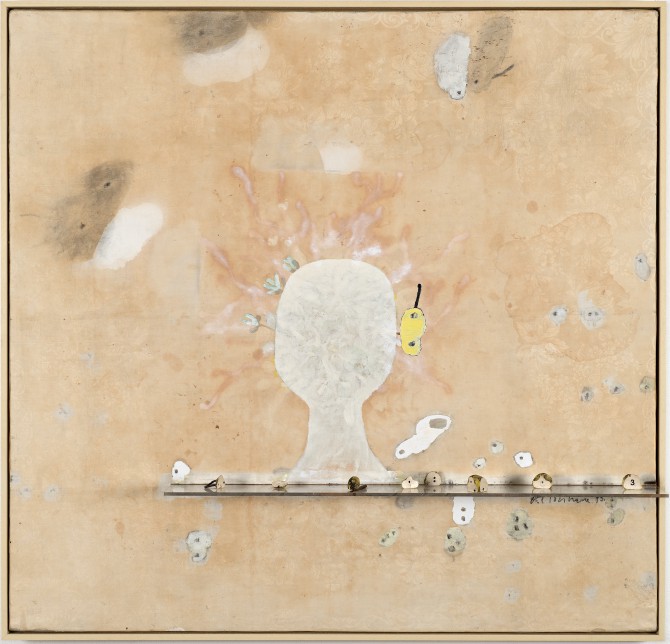
Gerhard Hoehme, 1973, Mediator zwischen Ding und Raum, acrylic, collage on damask, plasticine, acrylic glass, 115 x 112 x 12 cm (WV 73-05). Photo: Katrin Rother
Gerhard Hoehme, 1968, die Genesis des jungen Adlers
mit der alten Schlange, Acrylic on damask, PVC sensors, 110 x 60 cm (WV 68-12)
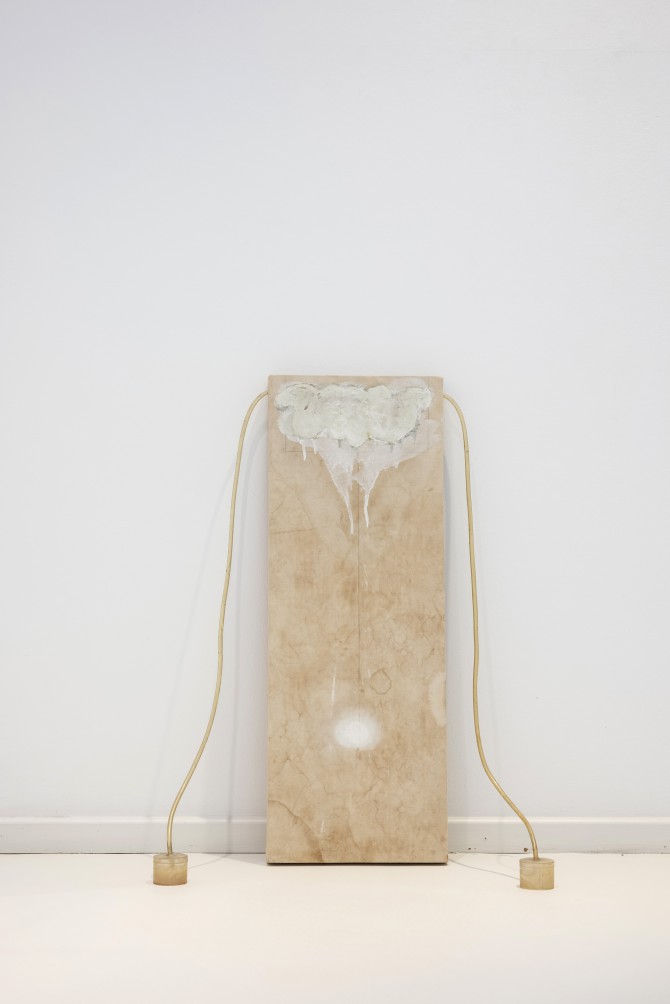
Gerhard Hoehme, 1968, die Genesis des jungen Adlers
mit der alten Schlange, Acrylic on damask, PVC sensors, 110 x 60 cm (WV 68-12)
Gerhard Hoehme, 1969, Untitled, collage, mixed media, 48,5 x 65,8 cm
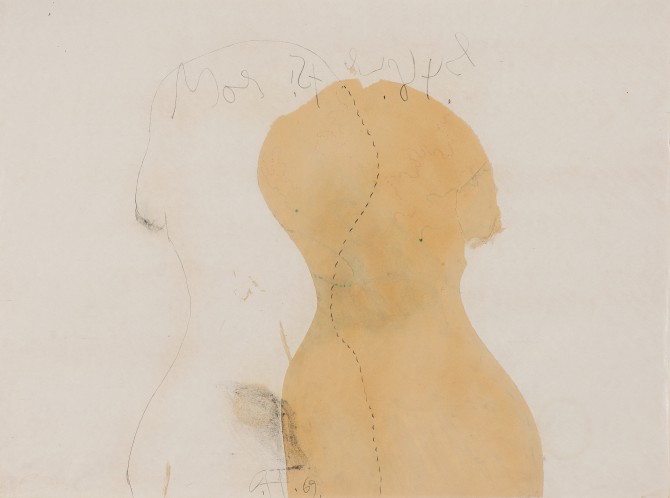
Gerhard Hoehme, 1969, Untitled, collage, mixed media, 48,5 x 65,8 cm
Michael Müller, 2017, Weiser Kopf, Series: Die Anderen, ceramic, 41 × 42,5 × 21,5 cm
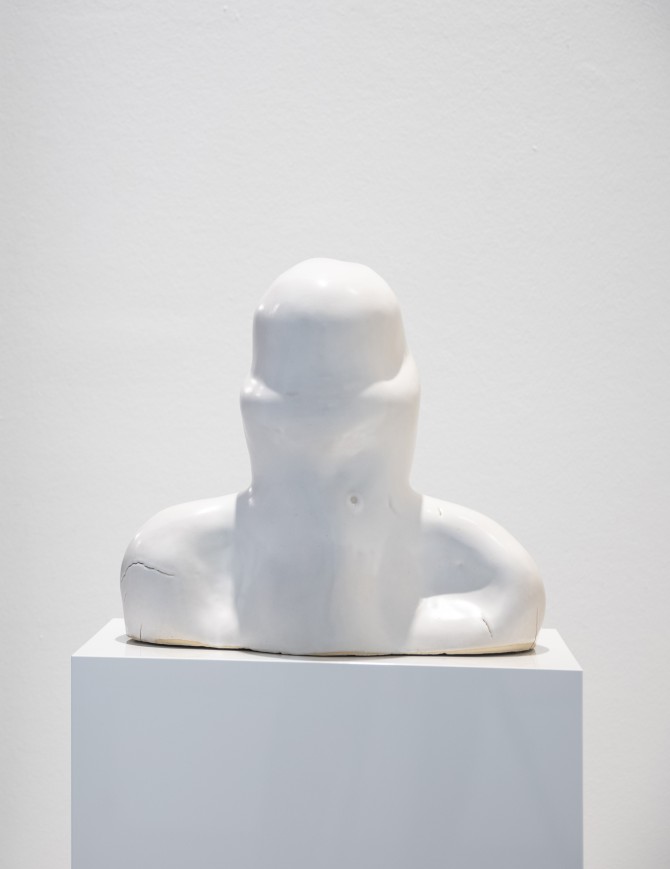
Michael Müller, 2017, Weiser Kopf, Series: Die Anderen, ceramic, 41 × 42,5 × 21,5 cm
Gerhard Hoehme, 1970, Untitled, collage, mixed media on paper,
58 x 42 cm. Photo: Katrin Rother
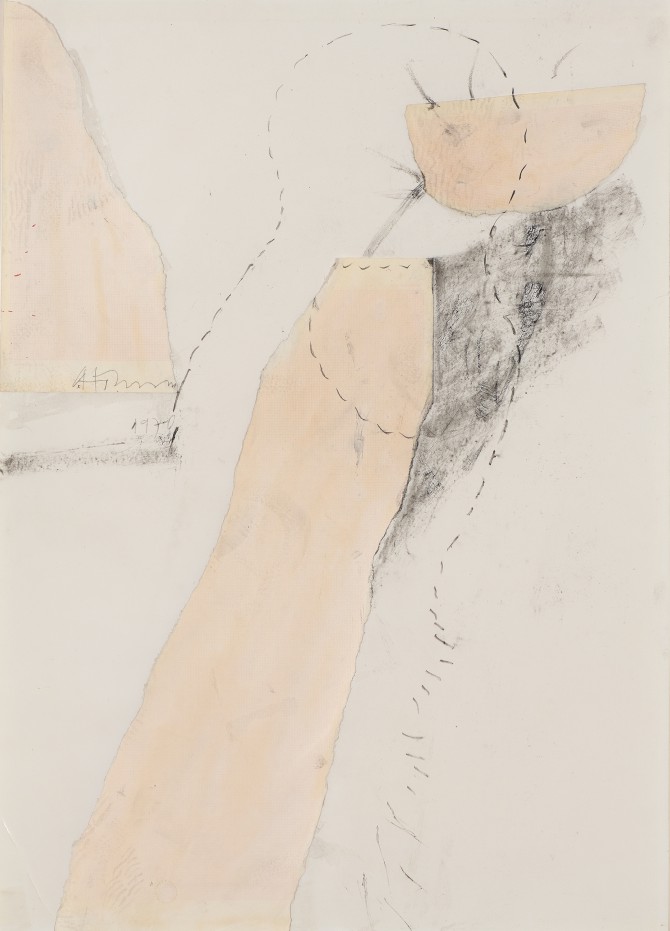
Gerhard Hoehme, 1970, Untitled, collage, mixed media on paper,
58 x 42 cm. Photo: Katrin Rother
Michael Müller, 2007, Hypnose Zeichnungen, Installation view, Gallery Georg Nothelfer, Photo: Frank Sperling
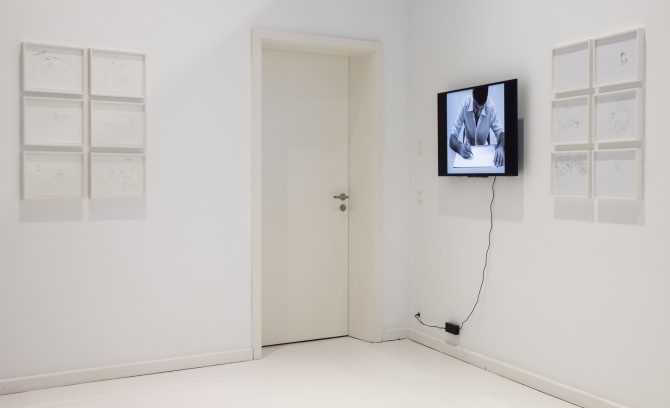
Michael Müller, 2007, Hypnose Zeichnungen, Installation view, Gallery Georg Nothelfer, Photo: Frank Sperling
Gerhard Hoehme, 1974, Spiegelkopf - Du bist Spiegel für den Anderen…, mixed media on paper, 66 x 51cm
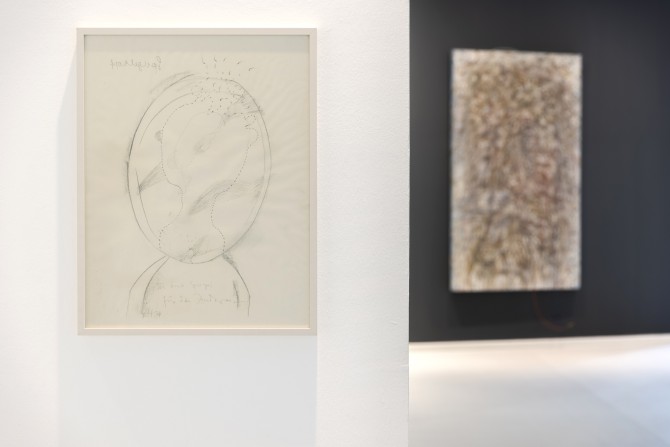
Gerhard Hoehme, 1974, Spiegelkopf - Du bist Spiegel für den Anderen…, mixed media on paper, 66 x 51cm
Installation view, Gallery Georg Nothelfer, Photo: Frank Sperling
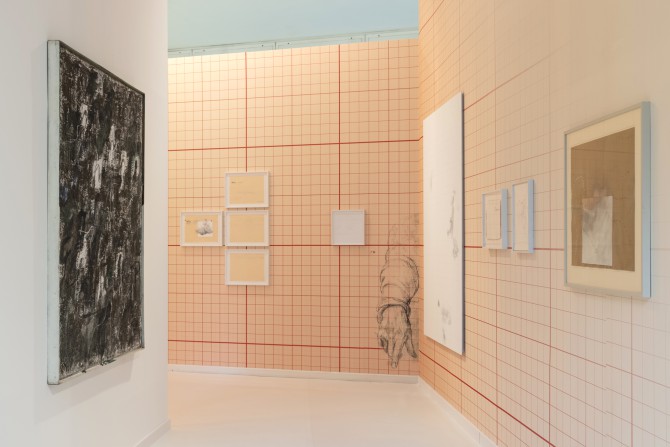
Installation view, Gallery Georg Nothelfer, Photo: Frank Sperling
Gerhard Hoehme, 1963, Bedrohliche Schatten, oil on Canvas, 160 x 140 cm
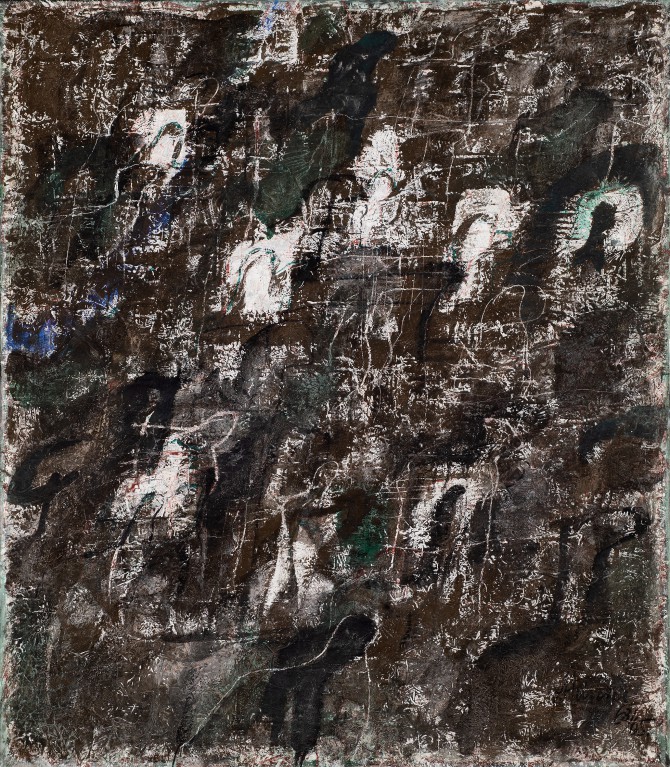
Gerhard Hoehme, 1963, Bedrohliche Schatten, oil on Canvas, 160 x 140 cm
Michael Müller, 2020/21, Studien zu Gefühl und Genauigkeit Teil #4.1 (Gegenläufige Leserichtung), pencil, graphit, tipp-ex and adhesive tape on different types of paper, 36,5 × 48,3 × 3,5 cm (4x)
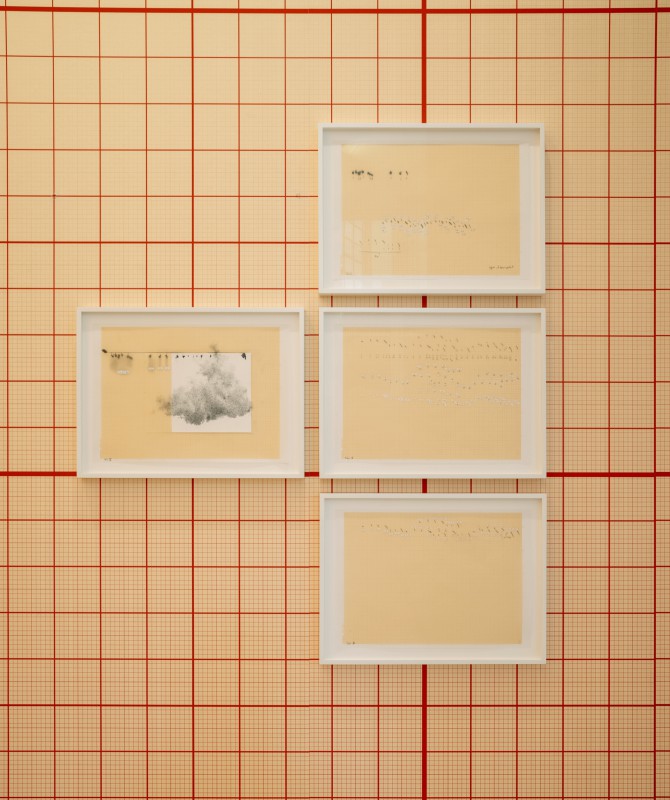
Michael Müller, 2020/21, Studien zu Gefühl und Genauigkeit Teil #4.1 (Gegenläufige Leserichtung), pencil, graphit, tipp-ex and adhesive tape on different types of paper, 36,5 × 48,3 × 3,5 cm (4x)
Gerhard Hoehme, 1968, Untitled, Mixed media, collage on paper, 58 x 76 cm. Photo: Katrin Rother
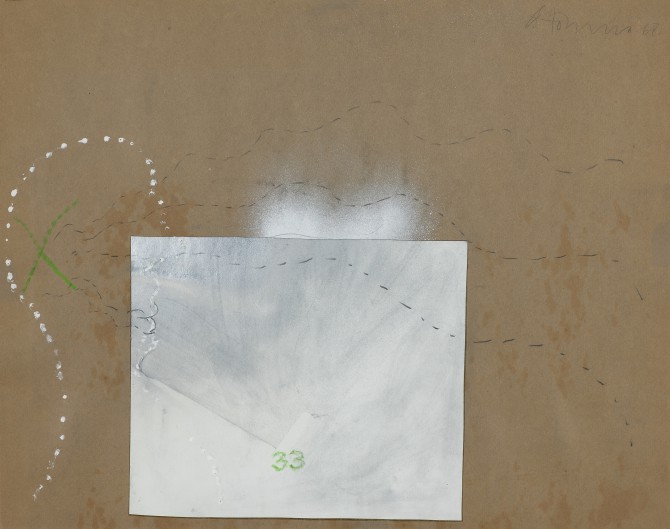
Gerhard Hoehme, 1968, Untitled, Mixed media, collage on paper, 58 x 76 cm. Photo: Katrin Rother
Michael Müller, 2011, Aide Memoire, pencil and acrylic on aluminium, 195 × 150 cm
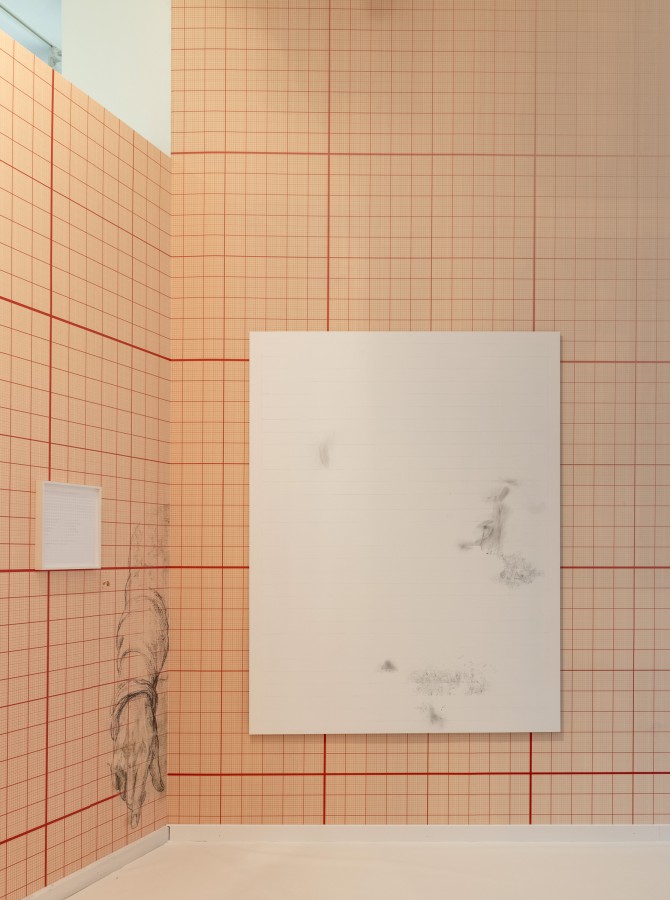
Michael Müller, 2011, Aide Memoire, pencil and acrylic on aluminium, 195 × 150 cm
Installation view, Gallery Georg Nothelfer, Photo: Frank Sperling
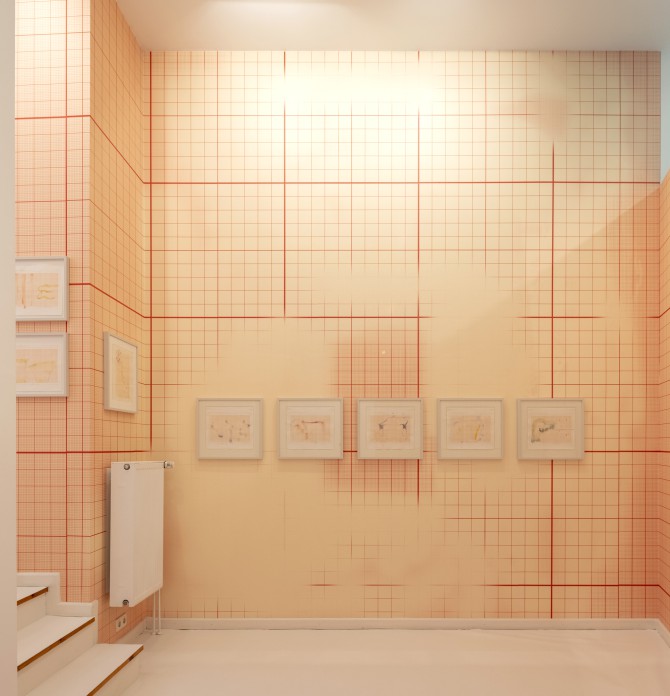
Installation view, Gallery Georg Nothelfer, Photo: Frank Sperling
Gerhard Hoehme, 1975, Untitled, watercolor on graph paper, 31 x 34,8 cm. Photo: Katrin Rother
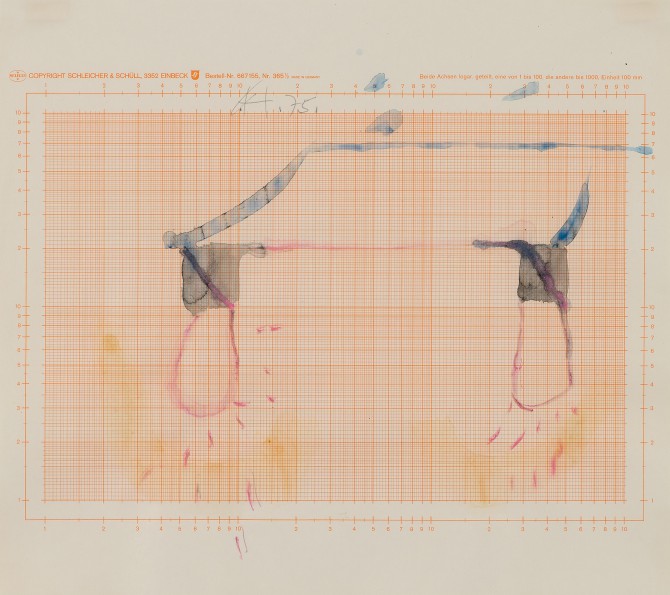
Gerhard Hoehme, 1975, Untitled, watercolor on graph paper, 31 x 34,8 cm. Photo: Katrin Rother
Gerhard Hoehme, 1975, Untitled, watercolor on graph paper, 31 x 34,8 cm. Photo: Katrin Rother
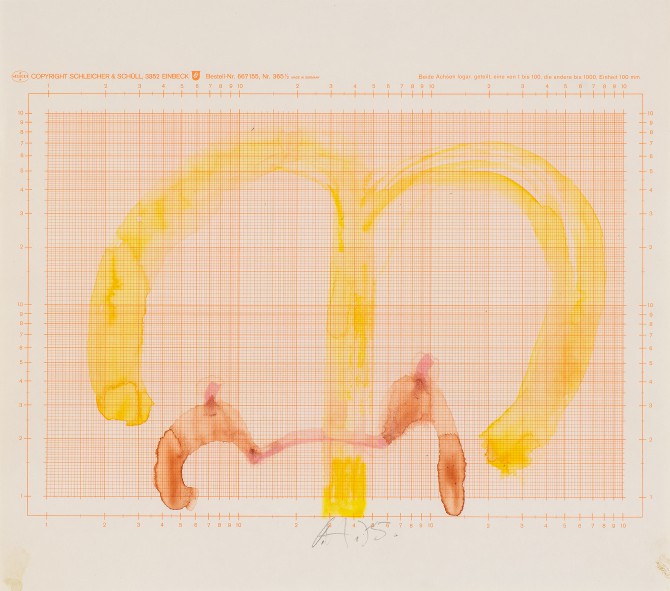
Gerhard Hoehme, 1975, Untitled, watercolor on graph paper, 31 x 34,8 cm. Photo: Katrin Rother
Installation view, Gallery Georg Nothelfer, Photo: Frank Sperling
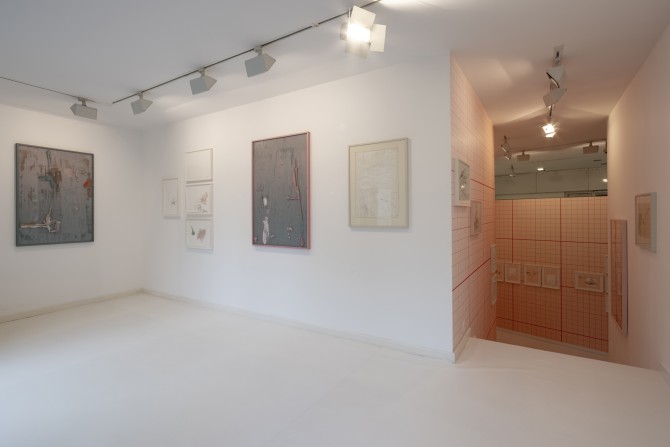
Installation view, Gallery Georg Nothelfer, Photo: Frank Sperling
Michael Müller, 2008, nrks Das Bezeichnen der Seele, pencil and acrylic on paper, part 1: 41 × 56 × 3,5 cm, part 2-4: 56 × 41 × 3,5 cm
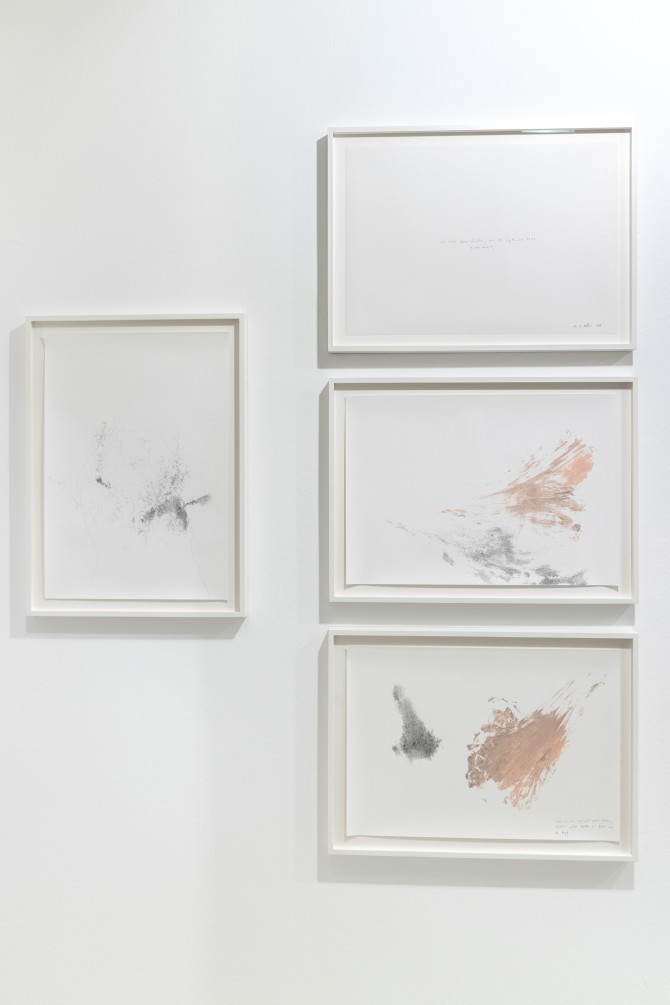
Michael Müller, 2008, nrks Das Bezeichnen der Seele, pencil and acrylic on paper, part 1: 41 × 56 × 3,5 cm, part 2-4: 56 × 41 × 3,5 cm
Michael Müller, 2021, Sofiysk (Amur Delta), acrylic and lacquer on glass, 124 × 83 × 4 cm
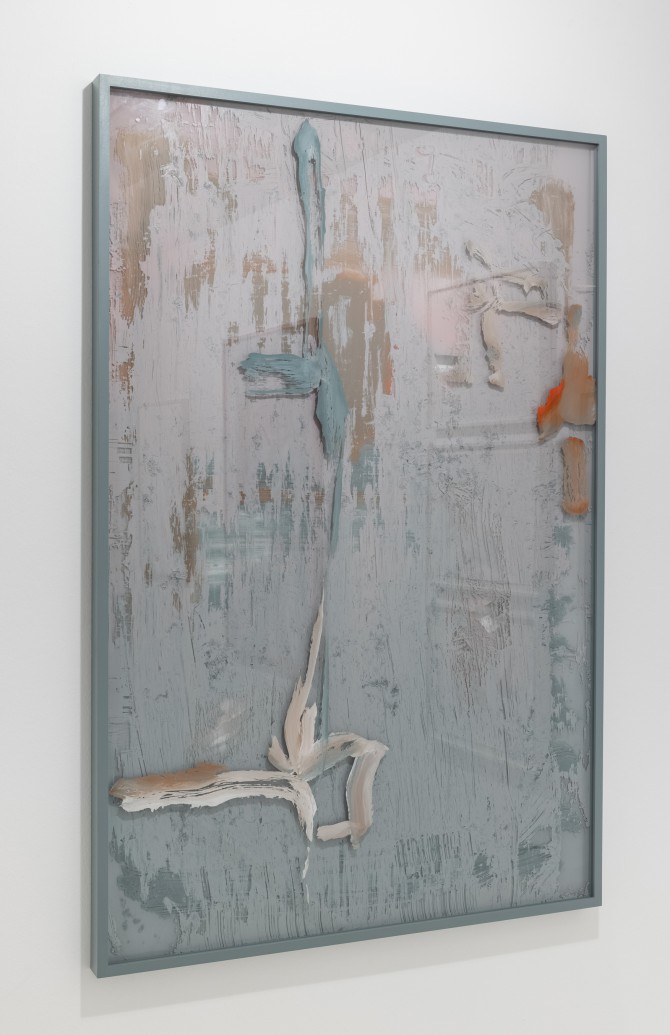
Michael Müller, 2021, Sofiysk (Amur Delta), acrylic and lacquer on glass, 124 × 83 × 4 cm
Gerhard Hoehme, 1957, Untitled, mixed media on paper, 41,3 x 67 cm. Photo: Katrin Rother
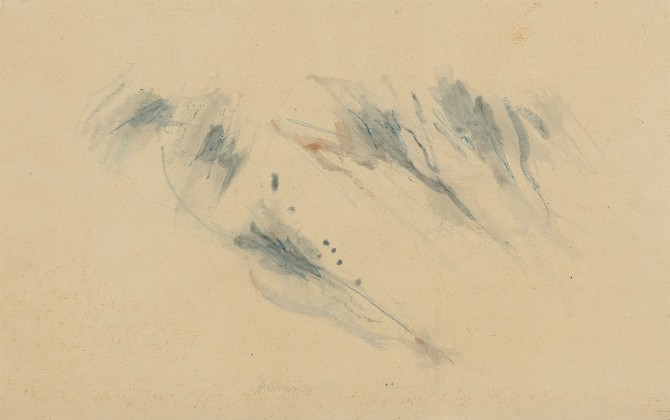
Gerhard Hoehme, 1957, Untitled, mixed media on paper, 41,3 x 67 cm. Photo: Katrin Rother
Gerhard Hoehme, 1986, Fautriers Echo, acrylic, canvas, PE sensors
100 x 80 cm (WV 86-10 )
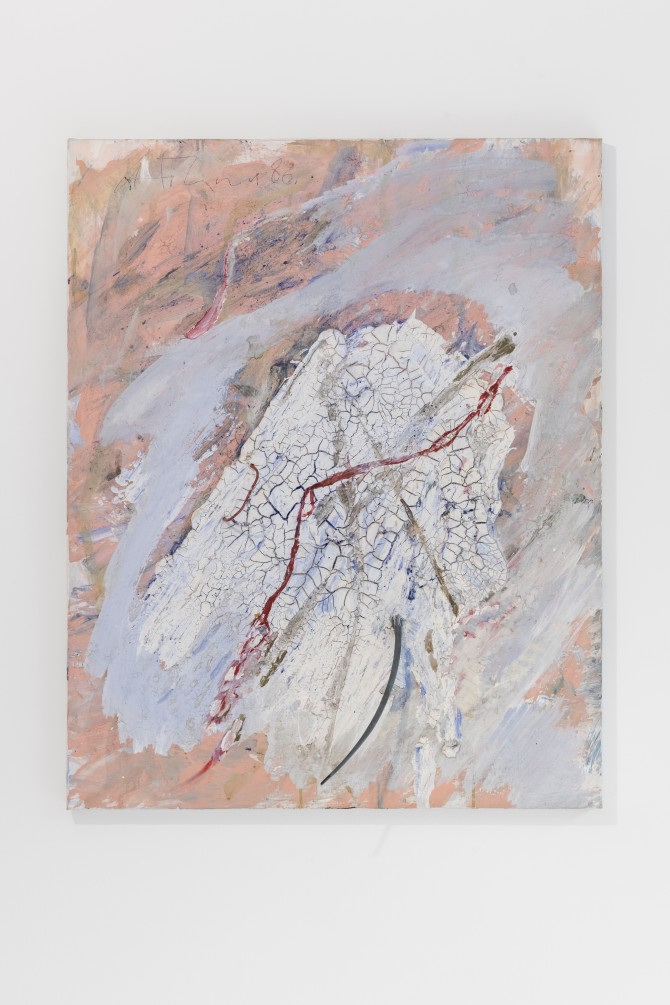
Gerhard Hoehme, 1986, Fautriers Echo, acrylic, canvas, PE sensors
100 x 80 cm (WV 86-10 )
GERHARD HOEHME & MICHAEL MÜLLER
An exhibition in cooperation with KUNSTSAELE Berlin
Options and Constellations
An exhibition in cooperation with KUNSTSAELE Berlin
Options and Constellations
The Shared and the Other in Gerhard Hoehme’s and Michael Müller’s Works
Michael Müller enrolled in Magdalena Jetelová’s class at the Kunstakademie Düsseldorf in the summer of 1992, eight years after Gerhard Hoehme stepped down from his position there as a professor of painting, and three years after his death. The two artists never met in person. Hoehme, a pioneer of Informel painting, transformed the Kunstakademie into one of the world’s most important art schools after the Second World War, together with K.O. Götz, who brought Art Informel to the Kunstakademie in the 60s.
While browsing through a catalogue featuring the 20th century’s 50 most important artists, Michael Müller discovered a work by Gerhard Hoehme by chance, and was surprised that he had not heard of him before. Confused and fascinated by Hoehme’s paintings—those made after a certain year including the characteristic polyethylene, or PE tubes, which protrude from the canvas as sculptural elements in the composition—Müller began to study Hoehme’s work and engage with it in his own artwork. Hoehme can thus be seen as a guiding spirit in Müller’s oeuvre, which, in turn, can be understood as an afterglow and an echo thereof, as inspiration and quotation, as something thought and felt or empathised with, and something that cannot be named in Hoehme’s work.
While Müller’s fascination for Hoehme’s art is easily recognized even outside the duo show “In Praise of Shadows – Das Navigating between Thinking and Feeling”, the juxtaposition of their oeuvres reveals the extent of their intellectual kinship. The works by the two artists invite comparison, prompting us to focus our gaze, to name what we see in iconographic terms, and interpret it through the lens of art history. Since the early days of Art Informel, Galerie Nothelfer has been among the galleries representing Informel artists — Gerhard Hoehme first and foremost. The gallery’s holdings include splendid examples of his art, which will also be showcased in the exhibition. The two phases of Hoehme’s oeuvre most clearly referenced by Michael Müller’s work, are the letter and number paintings from the 1960s, which can be understood as a rebus of a mystical landscape or a labyrinth, and works from the period during which Hoehme integrated PE cords as the most defining element, along with wires, knit fabrics and string. For his number and letter paintings, Hoehme drew inspiration from mythology, music, and literature, including the authors James Joyce, Ezra Pound, and Paul Nizon. In his own visual poetics of signs, Müller stylistically carries forward Hoehme’s work. Müller’s idea to develop the typeface “K4” for Robert Musil’s “Der Mann ohne Eigenschaften” (The Man Without Qualities) shares parallels to Hoehme’s letter paintings.
The works by Müller exhibited here also undoubtedly correspond to Hoehme’s “Mediator” works. “Mediator zwischen Ding und Raum” (Mediator between Thing and Space) is the title of one work by Hoehme that can be found in the exhibition. It is an acrylic collage on damask with Plexiglas, showing the outline of a human head surrounded by pictorial vibrations, resembling a radiant nimbus. The drawings “Mediator — Störfall“ (Mediator — Breakdown) from 1979 and Was man im Kopf hat (What’s on One’s Mind) from 1977 address a similar subject: the artist’s head as the centre of his knowledge and intellect, his creativity and sensibility, and as a metaphor for the artist as a transmitter, who is also a source of inspiration and mediation. Müller has made related works, such as “Köpfe” (Heads) and “Weiser Kopf” (Wise Head), both from 2017, in which the human head is understood and presented as a mediator, medium and transmitter.
Another striking parallel to Hoehme’s work is found in Müller’s “Metaphysik“ (Metaphysics). The surface of the painting is attached to an object by way of a colourful cable, reminiscent of Hoehme’s PE cords, which Hoehme designed for his works in every colour, using the extruder at BASF. For Hoehme, “the cord is the sculptural form of Heraclitan thought”; something similar can be said of the cords found in Müller’s work.
As curator of the exhibition, Müller embraced Hoehme’s idea of using the space surrounding the artwork to find new perspectives for art. Müller experiments with the exhibition space as well. For instance, the graph paper from the hygrograph for temperature and humidity also appears as a design element on the wall—in the form of a mural—thus expanding the pictorial space of Hoehme’s drawings. This object-space relationship certainly would have pleased Hoehme, who beginning with his “Shaped Canvases” continuously meditated on the value of the object and its surrounding space. Thoughts, art, history, and energy flow through the space, thus transforming the exhibition into a navigation through time and space. (Text: Vanessa Sondermann)
